Home > Pruning shade trees > Pruning cuts > Reduction and heading cuts > Heading cut detail
Heading cut detail
 |
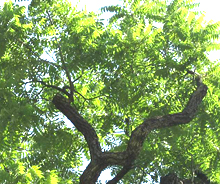 |
| A heading cut is a type of pruning cut that prunes a shoot no more than 2 years old back to a bud; cutting through an older stem back to a lateral branch less than 1/3 the diameter of the cut stem; or cutting a stem to an indiscriminate length. Heading cuts on trees typically are not appropriate in the landscape unless trees are being restored following a storm. Here is a heading cut in the crown of a tree that was damaged in a hurricane. Heading cuts are commonly used in the nursery on some stems and branches less than about one inch in diameter on certain species. | |
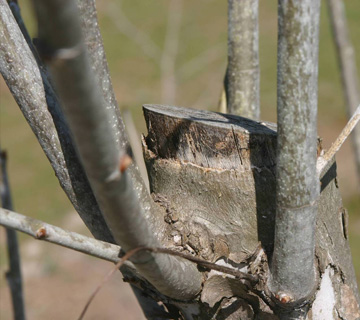
A heading cut was made on this sycamore one year ago. Several sprouts are growing from buds that were present just behind the cut surface. The cut stem died back about one inch following the heading cut.
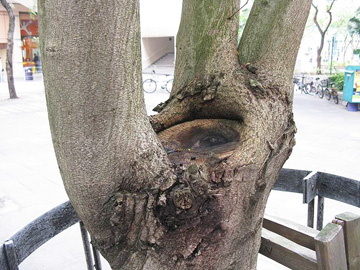
A year or more later, sprouts have grown larger and are beginning to close over the wound. This does not mean that all in well inside the tree.
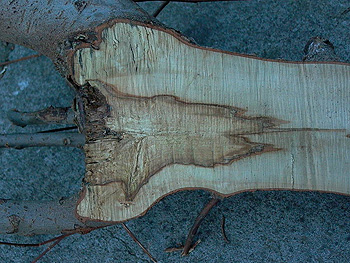
This sweetgum received a heading cut about one year earlier. Notice the four sprouts growing from the cut. The wood decay in the center of the cut is commonly associated with heading cuts, especially on trees that compartmentalize decay poorly. The decay from a small heading cut on a nursery tree would be considered insignificant. See: list of trees by ability to compartmentalize.
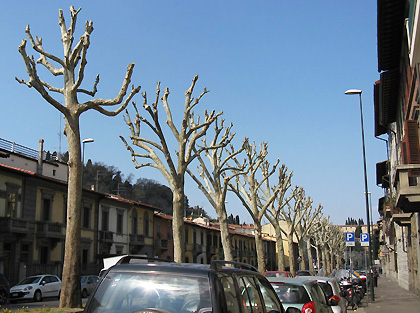
Heading cuts on London plane in Florence. This is considered substandard pruning.

